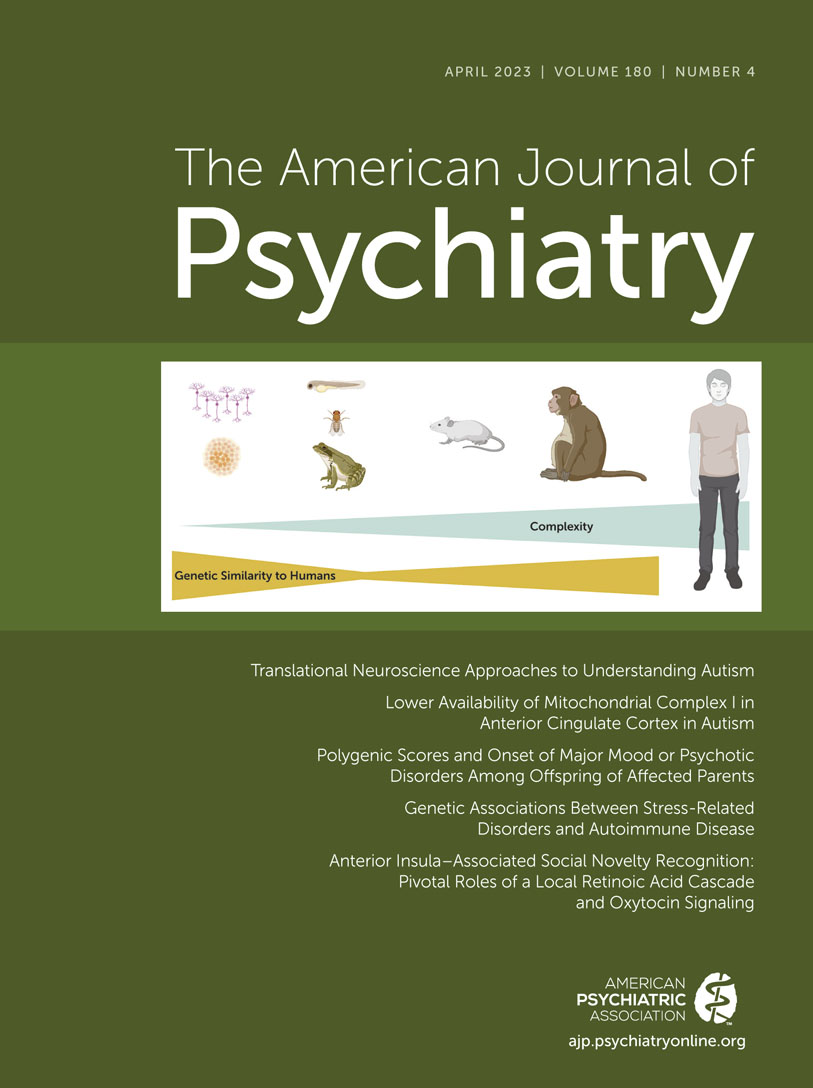Genetic Associations Between Stress-Related Disorders and Autoimmune Disease
Abstract
Objective:
Emerging evidence supports a bidirectional phenotypic association between stress-related disorders and autoimmune disease. However, the biological underpinnings remain unclear. Here, the authors examined whether and how shared genetics contribute to the observed phenotypic associations.
Methods:
Based on data from 4,123,631 individuals identified from Swedish nationwide registers, familial coaggregation of stress-related disorders (any disorder or posttraumatic stress disorder [PTSD]) and autoimmune disease were initially estimated in seven cohorts with different degrees of kinship. Polygenic risk score (PRS) analyses were then performed with individual-level genotyping data from 376,871 participants in the UK Biobank study. Finally, genetic correlation analyses and enrichment analyses were performed with genome-wide association study (GWAS) summary statistics.
Results:
Familial coaggregation analyses revealed decreasing odds of concurrence of stress-related disorders and autoimmune disease with descending kinship or genetic relatedness between pairs of relatives; adjusted odds ratios were 1.51 (95% CI=1.09–2.07), 1.28 (95% CI=0.97–1.68), 1.16 (95% CI=1.14–1.18), and 1.01 (95% CI=0.98–1.03) for monozygotic twins, dizygotic twins, full siblings, and half cousins, respectively. Statistically significant positive associations were observed between PRSs of stress-related disorders and autoimmune disease, as well as between PRSs of autoimmune disease and stress-related disorders. GWAS summary statistics revealed a genetic correlation of 0.26 (95% CI=0.14–0.38) between these two phenotypes and identified 10 common genes and five shared functional modules, including one module related to G-protein–coupled receptor pathways. Similar analyses performed for PTSD and specific autoimmune diseases (e.g., autoimmune thyroid disease) largely recapitulated the results of the main analyses.
Conclusions:
This study demonstrated familial coaggregation, genetic correlation, and common biological pathways between stress-related disorders and autoimmune disease.



